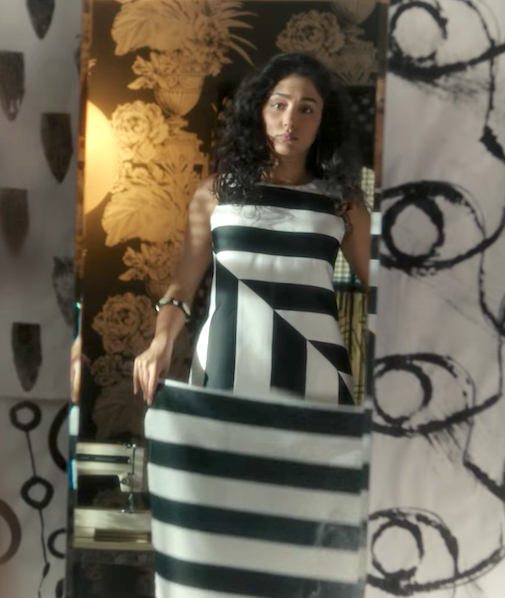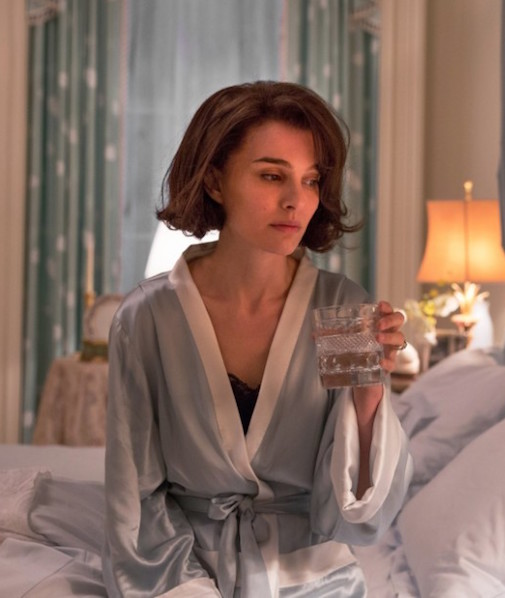"The Furniture" is our weekly series on Production Design. Here's Daniel Walber...
Oscar balloting has begun! As Nathaniel explained last week, AMPAS branches have received their nomination ballots. They’re due on the 13th. The Academy’s production designers occasionally make offbeat choices, though they don’t do it as often as the costume designers or the makeup artists. So here’s a final nudge on behalf of the best work of the year.


I’ve already written about three of the five movies I’d nominate, were I in charge. The crazed fandom of the apartment in Florence Foster Jenkins is a work of precision and inspiration. So is the heavily curtained metaphor that is the mansion in The Childhood of a Leader. The hotel in The Lobster, meanwhile, is as perfectly sterile as the above settings are feverish. All three would be a thrilling surprise on nomination morning.
My other two have become less present in the awards conversation than I’d guessed...
Paterson was never going to be an Oscar movie, I know that. But it’s only the second Jim Jarmusch narrative film ever to not receive a single Independent Spirit Award nomination. That’s nuts. Jackie, meanwhile, is doing quite well for Natalie Portman but hasn’t gotten nearly enough recognition in other categories.

Perhaps bizarrely, the two films have a major design theme in common. Both feature women who spend a great deal of time re-decorating their houses. Yet this shared activity is the essence of their difference, in each case a telling visual metaphor.
While Paterson (Adam Driver) is off driving the bus, his wife Laura (Golshifteh Farahani) paints the curtains and designs new clothes. Yet this is not a 1950s sitcom about domesticity or a Fassbinder film about madness. Laura’s artistic expression is a representation of marriage as a nurturer of creativity. Her design impulse, which gradually takes over the entire house, is as honorable a vocation as Ghost Dog’s samurai code or Corky’s (Winona Ryder) calling as a mechanic in Night on Earth.

Paterson, as well, has an artistic vocation. He writes poetry all day, most of it inspired by the beauty he finds in the details of his life. In a sense, his chosen mode of expression is not all that different from hers. Laura’s mania for repeated patterns of black & white has the single-mindedness of many a poet, instantly recognizable for its form but still full of more nuanced meaning. The difference is that she more eagerly shares it with the world, culminating in the brilliantly successful sale of her meticulously frosted cupcakes.

Jackie, meanwhile, is the portrait of a woman living her grief in a house that was never truly hers in the first place. Her grand exercise of restoring the White House seems futile in the wake of the assassination, abruptly ending her work. All of the historic emblems are reminders that her influence on the building has ended, that the Kennedy administration is itself a relic. The Lincoln Bedroom, once blessed by the quaintness of a museum, now threatens 19th century dust and madness.

The White House’s high ceilings and grand portals underline the loneliness of a castle that has been utterly abandoned, at least temporarily. The business of governing has already moved to the purview of President Johnson, but the Johnsons have yet to move into the presidential residence. And so Jackie wanders these halls alone, dwarfed by the scope of rooms designed to accommodate crowds.

The furniture develops a silent presence, as if Jackie has found herself among the watchful corridors of a Jean Cocteau film. There are chairs from every era of the republic. They are all empty, yet many seem to observe her as she walks by. They are ghosts, each with its own presidential memories.

The coup de grace is the replication of the 1962 TV special A Tour of the White House with Mrs. John F. Kennedy. It was made to showcase the $2 million renovation that had just been completed, an expensive project that needed some PR justification. This was Jackie’s most concrete opportunity to solidify the legacy of Camelot, yet even here she is dwarfed by the all-consuming grandeur of this living monument. No act of decoration can stop time.
